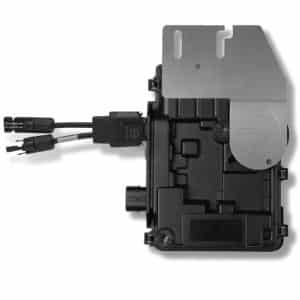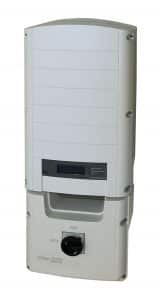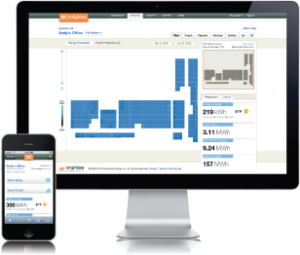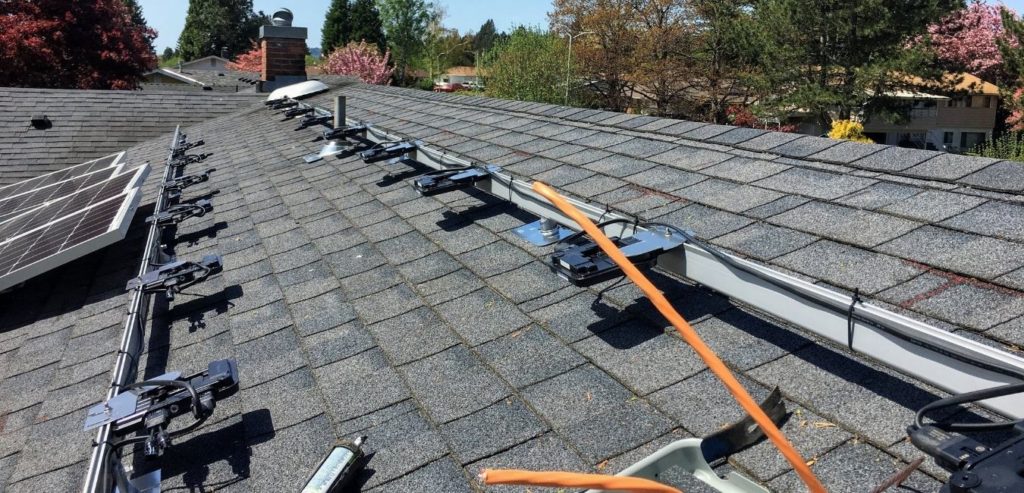Solar Microinverters
A solar microinverter is the equipment used to convert direct current (DC) energy generated by the solar panel into usable alternating current (AC) energy. Microinverters placed behind each solar panel and are much smaller than a string inverter.
When sunlight hits the solar panel, the photovoltaic effects occur and direct current (DC) electricity is generated. Unfortunately, a majority of devices and the entire electrical grid uses alternating current (AC) electricity. This means we will have to convert the energy into usable AC energy – not DC – using microinverters. The microinverters convert DC to AC energy to the renewable power you generate is compatible with the electrical grid.

Microinverters vs. String Inverters
While microinverters converts DC to AC energy behind each solar panel, a regular inverter (or string inverter) is one large, centralized inverter that all your solar panels get connected to.
If you get a chance to look at the underside of a solar panel (do NOT do so with alongside a professional), you will notice a positive (+) and a negative (-) terminal very similar to your car battery.
By connecting a positive end to another panel’s negative terminal you create a string of solar panels generating DC energy. The end of the string is then connected to the string inverter and the energy is converted into AC.

Benefits Of Using Microinverters
Having each panel paired with its own individual inverter mitigates the effect of shade on your solar system that may be caused by clouds or fallen debris. When a string inverter is used, if one solar panel out of the entire system is shaded it can reduce the rest of the solar panels power output.
Example
A good example is if you think of it like Christmas lights where if one goes out, they all are out. If one microinverter fails, it only slightly affects the overall production of the solar, not the entire system.
You wouldn’t want to buy a car without a “check engine light.” That is why we recommend solar microinverters because they are the best method to protect your investment.
One of the most exciting aspects, solar microinverters is that it allows the system owner to track the production of each solar panel in the array. If one panel or inverter fails or is under performing you will receive an alert from Enphase. Below is a snapshot of the powerful monitoring software

Conclusions
While there are a lot of factors and decisions in making a decision to go solar, but they should all be made to maximize the profitability of your system. Going solar is a nice gesture, but getting the most out of them is what’s important.
Some homes are more fortunate than others and have completely unshaded south-facing roof space. If that is the case, a string inverter might make the most financial sense. Most don’t meet that scenario and that is when solar micros are recommended.
Another good point to remember is building and electrical codes are evolving and using solar microinverters will keep your system compliant with future regulations more easily than string inverter because they are able to be updated via internet software updates.
We’ll help you decide which type of solar inverter is the best option for you and your family by drawing up several plans so you may see the financial scenarios for each type of inverter.
Get started by consulting with a professional today!


